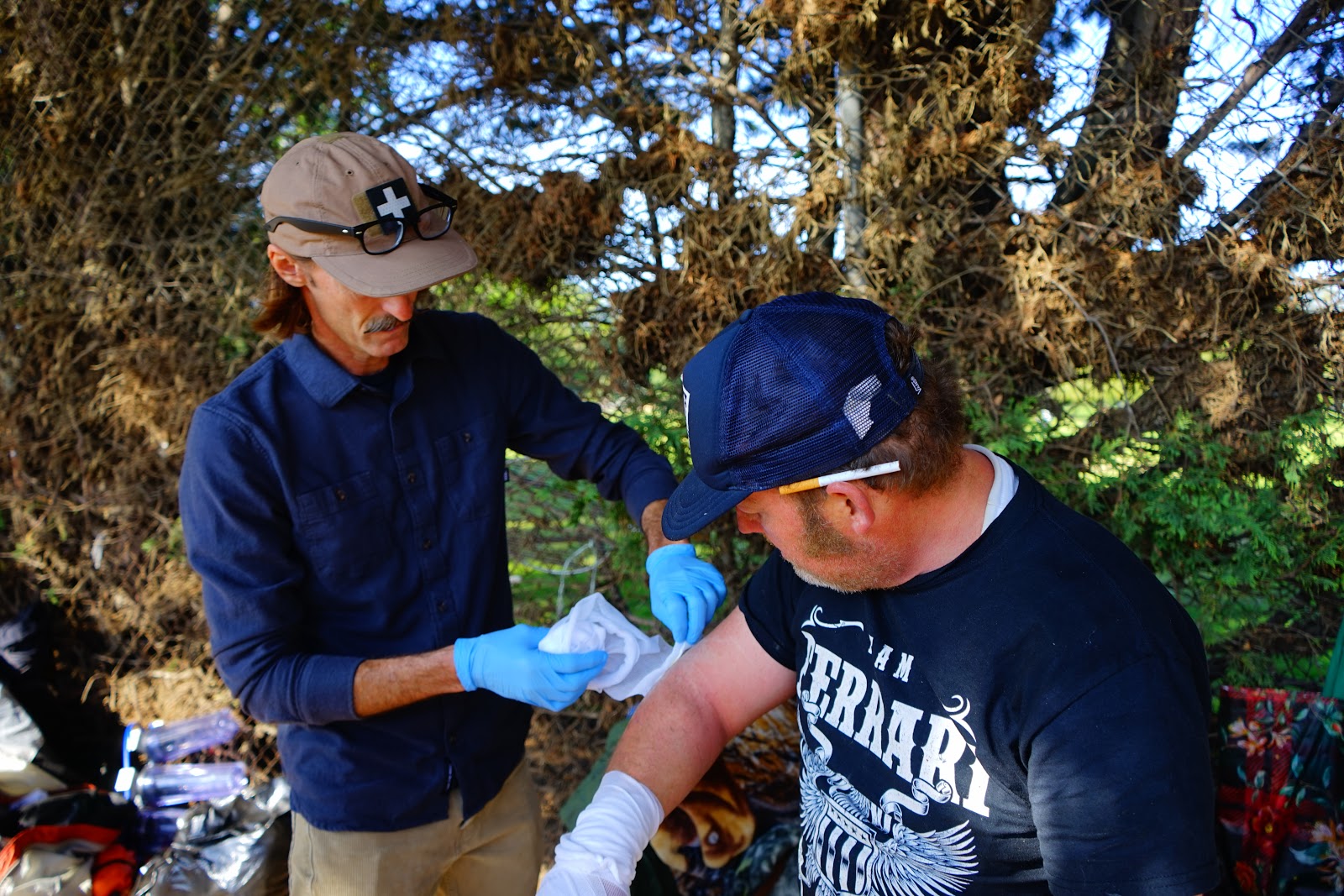Harm Reduction
The National Harm Reduction Coalition defines harm reduction as “a set of practical strategies and ideas aimed at reducing negative consequences associated with drug use.”53 Common applications of harm reduction include safe use sites, needle exchanges, and naloxone distribution.
Although the concept of harm reduction is rooted in the field of substance use, the method can be applied to all areas of clinical practice including sexual health, mental health and medical treatment.54 Working with unsheltered patients often requires negotiating realistic, collaborative treatment plans through a harm reduction lens. Venice Family Clinic’s Street Medicine Program uses harm reduction as an approach to not only substance use, but to mental health and physical health treatment, as well.
Harm reduction implies treatment without requiring complete sobriety from drugs and alcohol. It may mean asking your patient to use fewer drugs, to use less frequently, or to drink less. It may mean trying to get your patient to use drugs in a safer way to prevent overdose or infection. It may mean asking your patient to take some rather than none of their medication if that confers some benefit without doing harm.
Harm reduction programs serve as more than a public health strategy to prevent transmission of infectious disease or overdose associated with substance use. Providing low barrier, judgement-free care can be an effective way to engage marginalized, unsheltered patients to set on a path toward acquiring housing and other much-needed social assistance.55
Figure 32. Street medicine is a harm reduction tool to prevent an ER visit and hospitalization. Venice Family Clinic Photos.
Medical Harm Reduction
Clinicians should take into account a patient’s barriers to traditional modes of treatment and should find a harm reduction-based compromise. Working with patients to overcome barriers and to create realistic treatment plans is critical to helping patients stay engaged in their care.56
Challenging treatments could include undergoing a surgical procedure, adherence to a complex drug regimen, frequent laboratory testing or multiple office visits. Barriers could relate back to a mental health condition—disorganization, fear of entering the clinic’s four walls, or difficulty waiting in crowded waiting rooms because of PTSD or psychosis. Barriers can also be logistical—lack of transportation, lack of safe storage for medications, poor access to food or water, inadequate access to a restroom, or lack of shelter options for recuperation or tolerance of medication side effects.
The clinician can briefly document their decision-making process in the patient’s medical record. Some clinicians may want to have the patient sign an “Against Medical Advice” form if the patient opts for a care plan that has a potentially adverse outcome. Including a patient as an authority on their treatment plan can be a challenge for clinicians. As always, treatment decisions should be made using shared decision-making and should manage risk to “do no harm.”
Case Example—Medical Harm Reduction
A 54-year old female complaining of a 1-day history of brief episodes of “passing out” presents with high blood pressure of 200/130. On exam she was alert and oriented with no other cardiovascular or neurological abnormalities. The patient’s psychiatric exam revealed mild hypomania with a linear thought process and intact judgement. The clinician recommended emergency transport via 9-1-1 but the patient was concerned about leaving her dogs and motorhome unattended. After a long discussion and negotiation, the patient ultimately refused to go to the hospital, but a compromise was reached. The patient agreed to take blood pressure pills and come back to the drop-in center clinic the following day. The clinician prescribed a medication that did not need laboratory testing and documented the recommendations and denial of emergency care transport in the patient’s record.
Update (five months later):
The patient has now developed more trust in the clinician and the team. She is taking two different blood pressure medications and a low-dose, oral mood stabilizer. Her blood pressure is 150/90.
